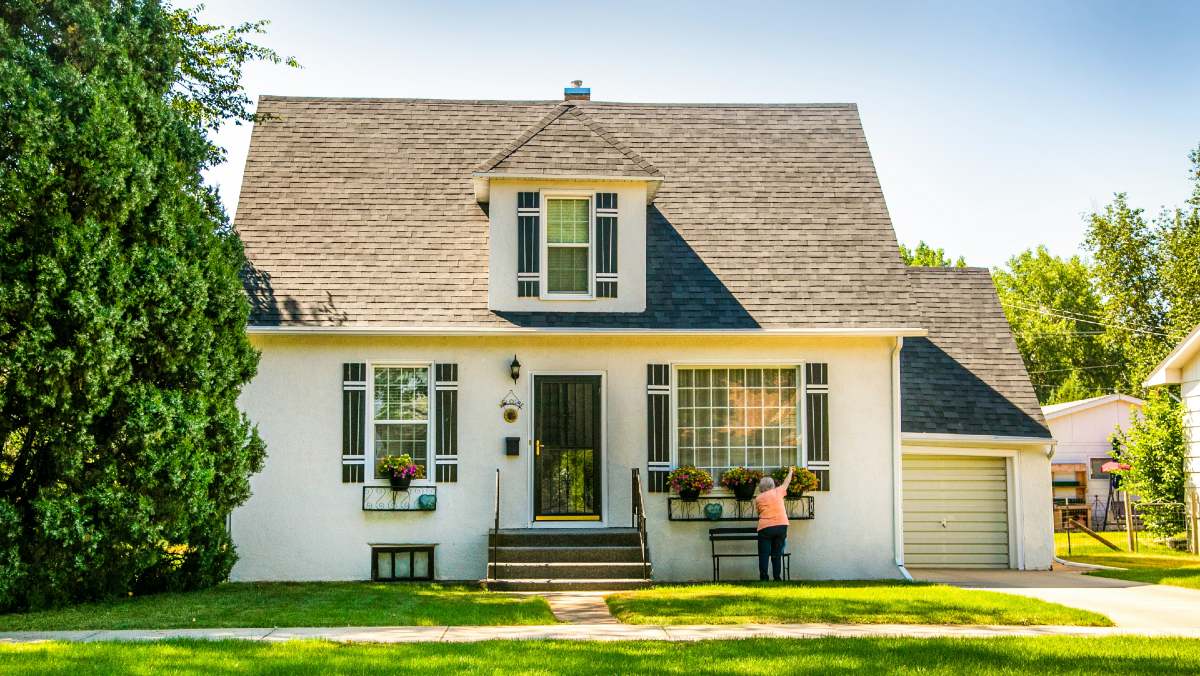Amid the noise about rate hikes, you might have missed an ominous warning Westpac issued last week.
Nearly half of the $471 billion dollars' worth of home loans the major bank holds will soon exceed the upper limit of the serviceability buffer they were assessed against.
When lenders assess an applicant's ability to repay a loan, they need to stress test the borrower's budget to ensure they will be able to withstand jumps to the interest rate or sudden changes to their financial position.
They only approve the loan if they are convinced the borrower would be able to repay the loan if the interest rate were to rise by a certain amount - known as the 'buffer'.
In 2019, during the last property market dip, APRA scrapped the expectations that banks use a 7% serviceability floor test.
Instead they could use either their own floor rate or a 2.5% buffer.
At the time it was thought first home buyers could see their borrowing power increase by up to $50,000 or 15%.
Since November 2021, APRA has expected banks to apply a 3% serviceability buffer, or 300 basis points, which was forecast to reduce borrowing power by 5%.
This means that to be approved for a home loan at a 5% p.a interest rate, the borrower needs to demonstrate their ability to repay the loan at an 8% rate.
Since May 2022 there have been 325 basis points' worth of RBA rate hikes, meaning many home loans issued before then would have exceeded the serviceability buffer.
Westpac is basically saying the cash rate has risen so quickly that almost 50% of its borrowers will soon face rates that push their repayments beyond the buffer amount they were assessed against.
This means many homeowners are venturing into uncharted territory with their mortgage and their ability to repay.
A sharp rise in mortgage stress and delinquencies seems inevitable if this is even remotely representative of the rest of Australia.
Advertisement
Buying a home or looking to refinance? The table below features home loans with some of the lowest interest rates on the market for owner occupiers.
| Lender | Home Loan | Interest Rate | Comparison Rate* | Monthly Repayment | Repayment type | Rate Type | Offset | Redraw | Ongoing Fees | Upfront Fees | Max LVR | Lump Sum Repayment | Extra Repayments | Split Loan Option | Tags | Features | Link | Compare | Promoted Product | Disclosure |
|---|---|---|---|---|---|---|---|---|---|---|---|---|---|---|---|---|---|---|---|---|
5.54% p.a. | 5.58% p.a. | $2,852 | Principal & Interest | Variable | $0 | $530 | 90% |
| Promoted | Disclosure | ||||||||||
5.49% p.a. | 5.40% p.a. | $2,836 | Principal & Interest | Variable | $0 | $0 | 80% |
| Promoted | Disclosure | ||||||||||
5.64% p.a. | 5.89% p.a. | $2,883 | Principal & Interest | Variable | $250 | $250 | 60% |
| Promoted | Disclosure | ||||||||||
5.64% p.a. | 5.89% p.a. | $2,883 | Principal & Interest | Variable | $248 | $350 | 60% |
| Disclosure |
Why on earth would the buffer need lowering?
As the past nine months has shown, a 300 basis point buffer demonstrates it might not be realistic to apply this to every bank-derived mortgage.
To prevent a similar situation happening in the future, one might think we should beef up the buffer.
However, on the contrary, many experts are calling for a decrease to the serviceability buffer to slow the decline of the property market and to prevent a 'credit crunch'.
To understand why, you'll need to remember that the relationship between property prices and interest rates tends to be inversely proportional.
Rates going up normally puts downward pressure on property prices (and vice versa).
All according to plan, the rate rises see property prices decline softly, merely a by-product of people having lower borrowing power.
The RBA is hoping that increased repayments for those already holding mortgages means they tighten the purse strings elsewhere, spending less on goods.
Demand cools, inflation comes down, and before we know it, rates will be on their way back down and property prices will boom once more.
The risk though, and the proverbial fire that some believe the RBA are playing with, is that rate hikes are so dramatic, they cause a big jump in mortgage defaults.
In the graph above you can already see the RBA has hiked much more aggressively than property prices have behaved.
Chief Economist at AMP Dr Shane Oliver has warned that excessive rate hikes could see Australian property prices bottom out at 30% lower than their peak last year.
Dr Oliver told Savings.com.au that despite the hysteria, enforcing a 3% buffer is now overcautious.
"Right now you apply the 3% buffer to mortgage rates up at 6%, you're up around 9%," he said.
"The last time mortgage rates were that high was prior to the GFC. It seems very unlikely we will go back to anything like that from here."
The rate hikes are already pushing many to the brink of defaulting on their mortgage.
If new home loans are also unnecessarily prohibitive to obtain, the property market along with rejected buyers can expect to take a hit.
Peter Tulip, Chief Economist at the Centre for Independent Studies and former researcher with the RBA, has been another vocal critic of the buffer, calling it terrible policy.
While he did not reject the notion of stress testing mortgage applicants, he believes there are several considerations APRA's guidelines ignore.
He says the buffer should not apply to fixed-rate loans, and should vary with the yield curve (a measure of the return on bonds with different maturity dates. A steep yield curve can be a precursor to a period of economic expansion, where rates are likely to increase).
He also highlights the fact that the buffer ignores borrowers who have a demonstrated history of rental or mortgage payments.
"A proven record of capacity to pay must be ignored in favour of APRA's arbitrary formula," he said.
The argument to keep it at 3%
However, some still see the high buffer as a necessary protection against an overwhelming surge in default rates.
Peter Koulizos, the University of Adelaide's Master of Property program director, believes APRA should not consider reducing the buffer until the economy begins to turn around.
"While interest rates are going up and property prices are going down, we need to have a good buffer to help prevent any major negative effects on the property market," Mr Koulizos told Savings.com.au.
"There were calls to decrease the buffer a couple of years ago, but what's happened is the cash rate went from 0.1% to 3.35%, which was above the buffer anyway.
"I think for now, while things are uncertain, it's best to keep the buffer at 3% above the current rate, but once interest rates stop going up and property prices stop going down, then we can reassess and get back to normal."
PRD chief economist Dr Asti Mardiasmo warned that lowering the buffer could undo the intended effect of rate hikes in the first place.
"Since housing prices are one of the biggest components of inflation, inflation could go up again," Dr Mardiasmo told Savings.com.au.
"This will continue the cycle of higher interest rates, squeezing more out of the household budget for others."
Savings.com.au's two cents
As with most economic problems, there are no easy answers.
Mortgage stress testing will likely always be an imperfect science, with plenty of prospective buyers who would have had no trouble with repayments turned down, and many approved under APRA's rules who default.
Perhaps a 3% buffer unfairly denies agency to home buyers who should have more freedom to assess their ability to repay a loan: motivated by 'paternalism', to again paraphrase Mr Tulip.
On the other hand, maybe the evidence of the past suggests buffers are needed to prevent unsustainable housing growth and to promote prudent lending standards.
APRA itself expects the 3% buffer to remain in place for 2023, but that it will be looked at 'very very closely'.
First published on February 2023
Picture by Andrea Piacquadio on Pexels

Ready, Set, Buy!
Learn everything you need to know about buying property – from choosing the right property and home loan, to the purchasing process, tips to save money and more!
With bonus Q&A sheet and Crossword!







 Harry O'Sullivan
Harry O'Sullivan
 Bea Garcia
Bea Garcia
 Denise Raward
Denise Raward
 Jacob Cocciolone
Jacob Cocciolone


